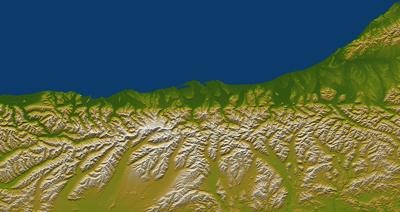
This map shows a rotated view along the Alpine Fault and the approximate locations of the Southern Alps Long Skinny Array (SALSA) seismometers, marked with blue dots. The blue lines mark the state highway network. MS — Milford Sound; FJ — Franz Josef; H — Hokitika. The grid lines are spaced 50 km apart. Source: SALSA Project


